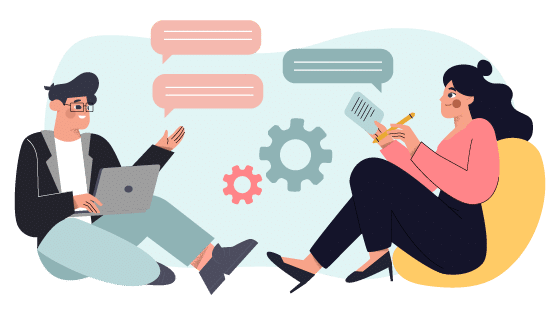Customer experience: It’s what sets some organizations heads and shoulders above the rest. Everyone is trying to improve customer experience as a way to generate buzz and create customer loyalty, but it’s easier said than done. Getting one location, branch, or store on board and offering a superior customer experience is one thing, but when you have hundreds of locations, shoppers might be having very different experiences, even if the sign above the store is the same.
Working with an international chocolatier, we were tasked with creating an eLearning program that not only improved customer experience but also improved it consistently among all boutiques. By getting rid of typical training aids (think the dreaded checklist or confusing job aid), we helped create new conversations around what customer experience truly means–and how to implement sweet improvements across the board.
Branded Engagements
The problem with most customer experience training is that it’s often too vague–or it’s too specific. When it’s too vague, brands are handing their customer experience over to employees–employees who may have their own spin on things. With vague directives, team members might be inspired to come up with their own interaction style, for better or worse.
When training is too specific, however, customer interactions can come off as scripted and wooden. Customers sense the disingenuous nature of their conversations with store employees, which can feel artificial.
Instead, customer experience training should walk the line: not too specific, but not completely handing the interaction over to the employee, either. In the case of our client, we created branded interaction styles based on the role and the location of the employee. If the employee was handing out samples at the front of the boutique, for example, she would have a specific tone and key words for the initial customer interaction. Employees at the dipping station would have different interactions based on the type of customer engaging there.
It’s not about having complete control over what comes out of employees’ mouths, but using the right language and having the right conversations to create a consistent experience across all locations. At the same time, employees feel comfortable candidly speaking with customers and answering questions.
Blended Learning
To teach employees this new way of creating a smooth and positive customer experience, a blended learning approach was definitely necessary. Instead of just one training session or checklists and PowerPoints, we wanted learners to assimilate the behavior; not just memorize a script.
Scenario-based eLearning is an important tool for customer service training since it gives employees a chance to test out their new skills, conversations, and keywords in a safe space for immediate feedback. We also created coaching cards that could be pulled out and reviewed during down time at work, as well as instituted shoulder-to-shoulder training with managers so employees can feel confident taking their new skills to task at work.
Altogether, what might have once been a quickie training session has become a six-week dedicated course that helps our client maintain better control over customer experience while still allowing employees to enjoy positive and personal interactions with the shoppers that come into their stores.
A smooth and consistent customer experience across all boutiques? That sounds pretty sweet to us.






